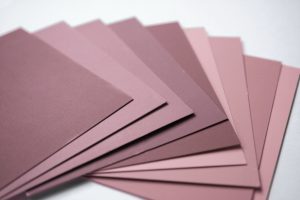

In the Amarna letters (14th century BCE) tekhelet garments are listed as a precious good used for a royal dowry. The manufacture of tekhelet appears to date back to at least 1750 BCE in Crete. Murex shells from the Iron Age II period (10th-7th centuries BCE) with ancient remains of purple on the shards seen on the right. This implies that tekhelet was difficult to obtain and expensive, an impression further corroborated by the later rabbinic writings. All Biblical mentions of tekhelet (both secular and priestly) attribute its usage to some kind of elite. Ezekiel 27:7 states that tekhelet-cloth could be obtained from "isles of Elishah" (likely Cyprus). The color could be used in combination with other colors such as 2 Chronicles 3:14 where the veil of Solomon's Temple is made of blue-violet ( Tekhelet), purple (Hebrew: אַרְגָּמָן Argaman) and scarlet (Biblical Hebrew: שָׁנִי ( Shani) or כַּרְמִיל karmiyl). The remaining 6 in Esther, Jeremiah and Ezekiel are secular uses such as when Mordechai puts on "blue and white" "royal clothing" in Esther. Of the 49 or 48 uses in the Masoretic Text, one refers to fringes on cornered garments of the whole nation of Israel ( Numbers 15:37–41), 42 refer to the priesthood or temple clothes and garments. There are three opinions in rabbinic literature as to how many of the four strings should be dyed with tekhelet: two strings one string or one-half string. The creature most commonly thought to have produced authentic tekhelet is the snail Hexaplex trunculus (historically known as Murex trunculus).Ī garment with tzitzit has four tassels, each containing four strings. However, in modern times, many Jews believe that experts have identified the Ḥillazon and rediscovered the tekhelet manufacture process, and now wear tzitzit which include the resulting blue dye. Knowledge of how to produce tekhelet was lost in medieval times, and since then tzitzit did not include tekhelet. According to later rabbinic sources, it was produced exclusively from a marine creature known as the Ḥillazon. Neither the source nor method of production of tekhelet is specified in the Bible. Tekhelet is most notably mentioned in the third paragraph of the Shema, quoting Numbers 15:37–41. In the Hebrew Bible and Jewish tradition, it was used in the clothing of the High Priest, the tapestries in the Tabernacle, and the tzitzit (fringes) affixed to the corners of one's four-cornered garments, including the tallit. Tekhelet ( Hebrew: תְּכֵלֶת təḵēleṯ alternative spellings include tekheleth, t'chelet, techelet and techeiles) is a "blue-violet", "blue", or "turquoise" dye highly prized by ancient Mediterranean civilizations. A set of Tzitzit, four tassels or "fringes" with blue threads produced from a Hexaplex trunculus-based dye - tied according to the opinion of the Sefer ha-Chinuch.


 0 kommentar(er)
0 kommentar(er)
